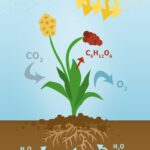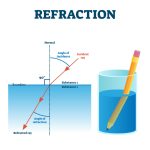Displacement Reaction: Class 8 Science: Chapter 8. Discussion on Displacement Reaction.
Displacement reactions are a type of chemical reaction in which one element or ion replaces another element or ion in a compound. Displacement reactions occur when a more reactive element displaces a less reactive element from a compound. Displacement reactions are important in many areas of science, including biology, chemistry, and geology. In this paper, we will discuss displacement reactions and provide examples of chemical formulas.
The Displacement Reaction
The general equation for a displacement reaction is:
A + BC → AC + B
In this equation, A is the element or ion that is more reactive than B in the compound BC. The more reactive A displaces B from the compound, forming the new compound AC and releasing B as a free element or ion. The reaction is driven by the difference in reactivity between A and B.
Examples of Displacement Reactions
- Zinc and Copper Sulfate Reaction
One common example of a displacement reaction is the reaction between zinc and copper sulfate. The chemical equation for this reaction is:
Zn + CuSO4 → ZnSO4 + Cu
In this reaction, zinc is more reactive than copper and displaces copper from the compound copper sulfate. The products of the reaction are zinc sulfate and copper. This type of reaction is commonly used in electroplating to deposit a layer of metal onto a surface.
- Sodium and Water Reaction
Another example of a displacement reaction is the reaction between sodium and water. The chemical equation for this reaction is:
2Na + 2H2O → 2NaOH + H2
In this reaction, sodium is more reactive than hydrogen and displaces it from the water molecule. The products of the reaction are sodium hydroxide and hydrogen gas. This type of reaction is highly exothermic and can produce an explosion if not carried out under controlled conditions.
- Iron and Copper Sulfate Reaction
A third example of a displacement reaction is the reaction between iron and copper sulfate. The chemical equation for this reaction is:
Fe + CuSO4 → FeSO4 + Cu
In this reaction, iron is more reactive than copper and displaces it from the compound copper sulfate. The products of the reaction are iron sulfate and copper. This type of reaction is used to produce iron sulfate, which is used as a fertilizer and water purification agent.
Conclusion
In conclusion, displacement reactions are an important type of chemical reaction in which one element or ion replaces another element or ion in a compound. Displacement reactions are driven by the difference in reactivity between the two elements or ions. Zinc and copper sulfate, sodium and water, and iron and copper sulfate are all examples of displacement reactions that have practical applications in a variety of fields.


















